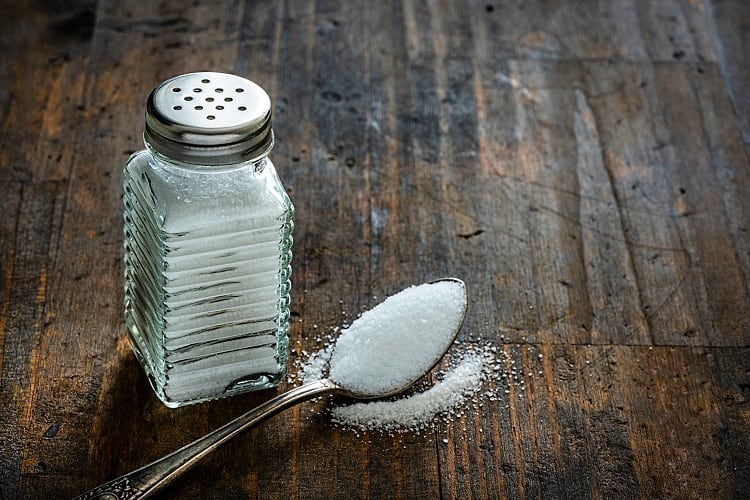Eating too much salt can cause raised blood pressure, which in turn is a major risk factor for cardiovascular diseases like heart attacks and stroke, according to campaign group Action on Salt. A reduction of salt, even by just 1g each day, could prevent 4,147 premature deaths and save the UK’s National Health Service (NHS) £288 million each year, the UK’s Department of Health suggests.
Salt consumption is still an issue. Salt consumption levels recommended for an adult by the UK’s National Health Service (NHS) are 6g per day, but according to the NHS, the average consumption level is around 8.4g. Furthermore, a survey by UK-based sodium-free salt manufacturer LoSalt suggests that most people add salt to a meal before tasting it first.
People in the UK consume salt from a wide variety of places, from salami, deli meats and sausages to crisps and nuts to gravy and ketchup to pizza, smoked salmon, and bread. Pizza, for example, often has copious amounts of salt; Action on Salt research last year found that some takeaway pizza contains more than three times the recommended amount of salt for an adult.
The UK government has now delayed landmark HFSS regulation on volume and price (for example, on promotions such as ‘buy one get one free’) until October 2025. According to Caroline Klinge, Technical Sales and Marketing Director at LoSalt and its parent company Klinge Chemicals Ltd, the government needs to do more to reduce salt consumption among UK citizens.
HFSS legislation and salt consumption
For all the guidance given by institutions such as the NHS, salt consumption does not seem to be decreasing, LoSalt suggested. “Current NHS and government guidance is having no impact on consumer salt intake, with figures showing discretionary salt use has not changed in over a decade,” Klinge told FoodNavigator.
With the delay in HFSS regulation, the problem has become more urgent, suggested Klinge, and action must be taken. “We are calling for a renewed focus on salt reduction from retailers, manufacturers, and the Government. The Government needs to play its part to educate consumers and the food industry on salt intake and the positive impact cutting intake will have on the nation’s health,” she told us.
“Brands and retailers can play their part by educating consumers on the benefits of reduced sodium salt and ensuring they are visible on shelf. But for lasting change we also need efforts from the Government to introduce a mandatory and enforced salt reduction programme covering food manufacturers, brands and retailers.”
Sodium and salt
Sodium is, according to Klinge, a key reason why salt is linked to so many poor health outcomes in the first place.
“Too much salt disrupts the natural balance of sodium in your body and makes [it] retain more water, which in turn puts more pressure inside your blood system. The excess fluid presses on the walls of your arteries, which carry blood from your heart round your body, leading to high blood pressure. High blood pressure can then lead to blockage of arteries which supply blood to your brain – in other words, to a stroke,” she told FoodNavigator.
Indeed, institutions such as the World Health Organization (WHO) have linked sodium to the negative health effects associated with salt consumption, sodium being a key reason why they take place.
However, low sodium salt sales are declining, with sea salt, rock salt and flavoured salt all increasing and table salt remaining stable, according to LoSalt.
With such salt reductions, it is important to maintain an appealing taste in order to keep consumers on board. “Taste is ultimately a key factor in manufacturers, foodservice providers and consumers choosing to switch from regular salt to a potassium-enriched salt and there are many poor substitutes available on the market. The product must look, taste and feel like ‘the real thing’ to ensure repeat purchase or continued use,” Klinge told us. With its own product, LoSalt aims to do this.
“Often in salt alternatives, the bitter notes of potassium chloride can be detected, but in the case of LoSalt, the taste results remain overwhelmingly positive. This is because we expertly blend two natural mineral salts (potassium chloride and sodium chloride) ensuring that no flavour maskers are required. It can be used as a like for like replacement to regular table, sea and rock salts allowing for 66% sodium reduction without compromising on taste.”
LowSalt works with brands such as Greggs to reduce the sodium content in goods, thus aiming to reduce sodium consumption in general.





